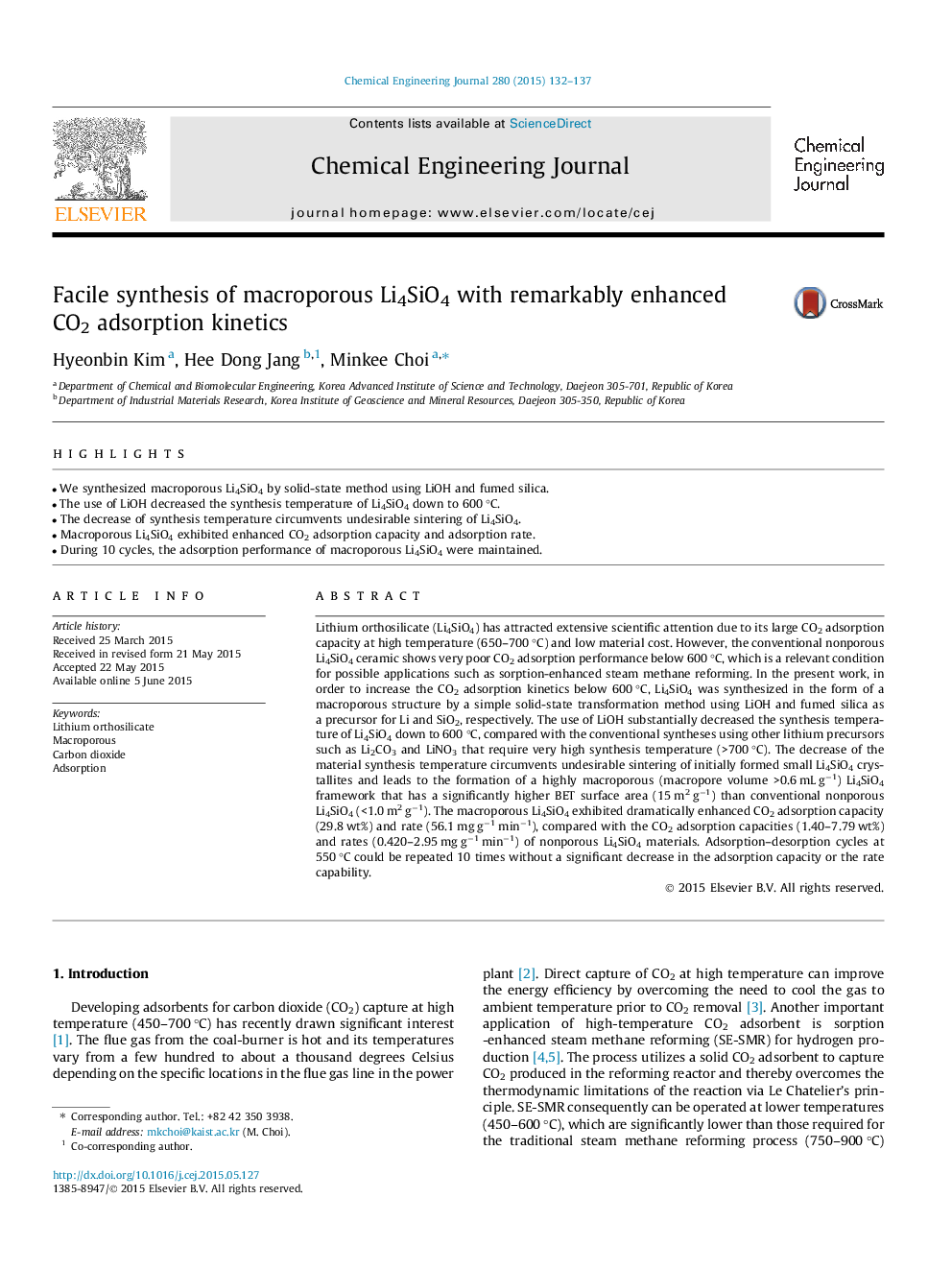| Article ID | Journal | Published Year | Pages | File Type |
|---|---|---|---|---|
| 6584263 | Chemical Engineering Journal | 2015 | 6 Pages |
Abstract
Lithium orthosilicate (Li4SiO4) has attracted extensive scientific attention due to its large CO2 adsorption capacity at high temperature (650-700 °C) and low material cost. However, the conventional nonporous Li4SiO4 ceramic shows very poor CO2 adsorption performance below 600 °C, which is a relevant condition for possible applications such as sorption-enhanced steam methane reforming. In the present work, in order to increase the CO2 adsorption kinetics below 600 °C, Li4SiO4 was synthesized in the form of a macroporous structure by a simple solid-state transformation method using LiOH and fumed silica as a precursor for Li and SiO2, respectively. The use of LiOH substantially decreased the synthesis temperature of Li4SiO4 down to 600 °C, compared with the conventional syntheses using other lithium precursors such as Li2CO3 and LiNO3 that require very high synthesis temperature (>700 °C). The decrease of the material synthesis temperature circumvents undesirable sintering of initially formed small Li4SiO4 crystallites and leads to the formation of a highly macroporous (macropore volume >0.6 mL gâ1) Li4SiO4 framework that has a significantly higher BET surface area (15 m2 gâ1) than conventional nonporous Li4SiO4 (<1.0 m2 gâ1). The macroporous Li4SiO4 exhibited dramatically enhanced CO2 adsorption capacity (29.8 wt%) and rate (56.1 mg gâ1 minâ1), compared with the CO2 adsorption capacities (1.40-7.79 wt%) and rates (0.420-2.95 mg gâ1 minâ1) of nonporous Li4SiO4 materials. Adsorption-desorption cycles at 550 °C could be repeated 10 times without a significant decrease in the adsorption capacity or the rate capability.
Related Topics
Physical Sciences and Engineering
Chemical Engineering
Chemical Engineering (General)
Authors
Hyeonbin Kim, Hee Dong Jang, Minkee Choi,
